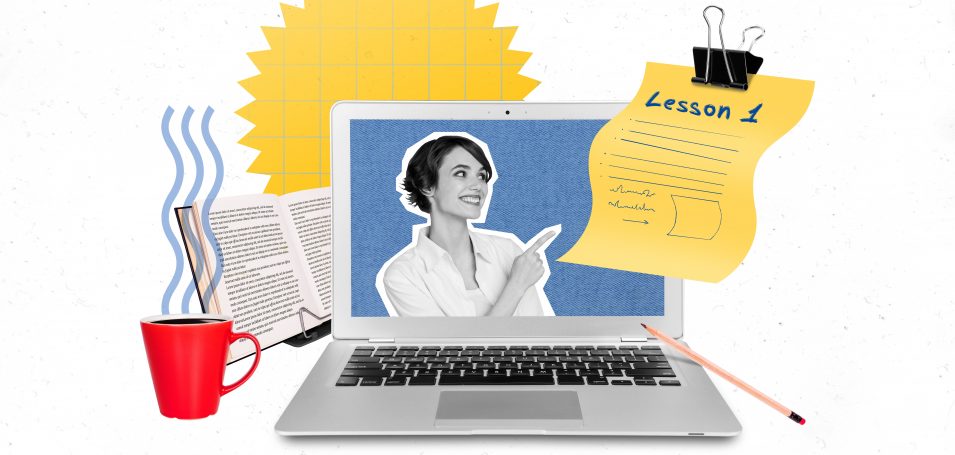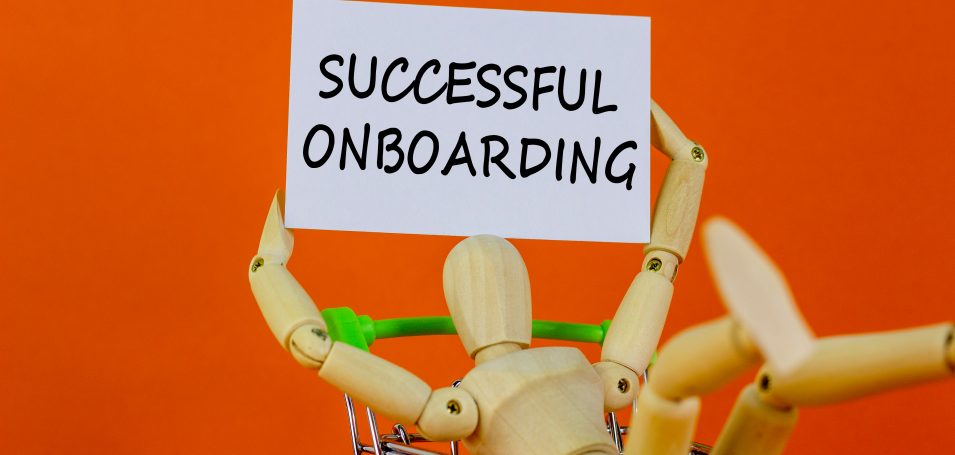If you’re a customer education team of just one or two people leading the charge in championing the value of education in the business, it’s not uncommon to feel like you’ve hit a ceiling on what you can achieve. While starting out with a small team is a legitimate first step, you don’t want to get stuck at this stage forever. The million-dollar question is: how can you scale up and become a larger function of the organization?
At this year’s COGNITION, we hosted an intimate panel discussion on this topic, How to Scale a Customer Education Team. Courtney Sembler from HubSpot Academy and Bear Shelton from Lucid joined our own Brian Childs, VP Product Marketing at Thought Industries to share their own best-practices and experiences. Let’s dive in!
The “path to now:” common milestones in a customer education team’s journey
Brian started out by asking the panel which transitions they had experienced in their own journeys, and for the milestones that customer education teams could expect on the journey to grow their function. What has been their “path to now”?
For Courtney, the transition from live Instructor-led Training (ILT) to on-demand courses was a huge shift. “Originally, everyone who worked at HubSpot academy was a content creator. The first big transition we went through was when people told us, ‘I couldn’t attend the live webinar’ or ‘I wanted to watch that webinar again’ and we transitioned to on-demand. We wanted to serve a ‘one → many’ approach rather than continuing with ‘one → few’.”
Courtney quickly saw how on-demand content supported goals like improving onboarding and supporting customer success, and after a few years this led to the next transition – using the Academy for acquisition, and moving to become a function of Marketing.
More recently, Courtney also commented on a smaller transition that involved localization. HubSpot now creates content in six languages, and that milestone obviously came with a need to scale the team.
“Providing equitable learning is no longer an option but a requirement in customer education. That means considering accessibility and localization as part of your roadmap for scale.”
Courtney Sembler
Making the business case to leadership for further investment in customer education
Bear told the audience how you often need an organizational mindset shift in order to encourage these transitory milestones, and he gave some great tips for how to get the leadership on-side.
“I remember going into my leadership and saying, we’re touching tens of thousands of people each year with our training efforts, and I know that you have warm and fuzzy feelings about training, but Lucid has 40 million users! You’re investing all of this money, and we’re not hitting the number of people that we could. So if you believe training and education is valuable, we should be aiming to impact the business in a real way by touching at least hundreds of thousands of users with what we’re creating. I remember leadership immediately said ‘What can you do, and how can we help you do it?’”
At that stage, once you have leadership behind you, you can offer ideas for scaling customer education, whether that’s an Academy, a Certification, monetizing training offerings or any other item with strategic value. Once the executives have chosen what they want, it’s just a matter of you explaining what you need in terms of resources to reach that goal.
We loved Courtney’s advice about changing the conversation from negative to positive when speaking to the executive team, and she believes it starts by not trying to do everything with the team you have.
“If you don’t have the headcount that you need, and yet you still force the team to do the work, all you end up with is an overworked team. Instead, put up an imaginary stop sign and say, ‘We’re not going to do this Certification, because we don’t have the resources.’ Suddenly, you’re going to get execs asking what you need to get the goals met. Instead of complaining that the team is overworked, walk in and say ‘This is what we can do with what we have – is that enough to meet our current goals? If not, then this is what we would need to make those goals happen.’”
Another best practice from Courtney that resonates with Thought Industries’ best practices is to think about where you want to be in 18-24 months, not in 6 months from now. You don’t want to be walking back into that room in 6 months and saying that you need more people, especially if you haven’t had enough time to measure impact – so think ahead, or you’re going to be met by a lot of concern from the leadership.
How to know what to ask leadership for, and accurately plan customer education for scale
A great question that came in from the audience was how to know what to ask for, especially in terms of headcount. Bear explained how some areas are easier to calculate than others. For example, headcount for ILT is pretty simple, and can be worked out by looking at how many people are registered for courses, or how many customers have training as part of their SLA. That will give you an idea of how many hours of training, (and therefore how many trainers) you need. We love Bear’s best-practice of always having an extra trainer on staff to account for vacation days, sickness or anything else that comes up.
Other content is harder to gauge up front, and it’s going to come down to what you’re creating. There’s no such thing as the ‘perfect’ headcount for a customer education team. Instead, start with the goals, and then reverse-engineer what you’re going to need. Ask yourself, are you planning ILT, and are you charging for it? Is the goal Professional Services, a Certification, and are we offering some kind of credential or badging? Will we be launching an Academy, a University, managing the Help Center or Community? Without the answers to exactly what’s in scope – it’s hard to know what resources you need to get an MVP off the ground. The ultimate question is: What does your leadership care about, and how can you optimize your resources to meet those needs?
Courtney agreed that it’s all about outcomes. At HubSpot, Courtney likes to make projections for headcount at multiple layers. First, the “status quo” projection explains what headcount or resources she would need to keep the current content relevant, without adding anything extra. Next, she pushes it up one layer at a time, to say this is what the team could do with 2x that investment, 3x, or even 4x to serve higher goals or outcomes.
There’s also a case of recognizing what kind of content you want to produce, which Brian commented you can test right out of the gate. “Does the person consuming here care more about having it now, or having it white-glove? When you evaluate these preferences, it can dictate the resources you need.”
Staying focused on your long-term program goals
Once you have an understanding of the outcomes, stay focused on those goals. Bear talked about how easy it is to get lost in the iterative mindset improving what you already have, and lose focus on the next steps.
“I like to think about the filmmaker’s ideology ‘Kill your darlings.’ What got you here, won’t get you there, so be ready to lose the ego and move on to build something new that’s going to work for the organization.”
Bear Shelton
Courtney reiterated this point and drove home the idea of focusing on the desired outcomes: “There’s always going to be some content to keep up to date, to iterate on and change. But ask yourself – what’s most important right now? I like to talk about putting on really effective blinders where you say to your team ‘Yes that’s a great idea, but not right now.’ It’s not that we can’t do the next big thing or idea, but we can’t lose sight of what our focus should be at this time.”
This panel discussion was packed to the rafters with actionable ideas for scaling a customer education team! Check out the full webinar to learn about:
- How to hire: Bear discusses what your first and second strategic hire should be, and how to build out your team effectively to support your growth.
- Measuring impact: Courtney explains the KPIs to track at the earliest stages before you even have analytics to work with, and then how to adapt the data you track as you evolve.
- Proving worth: What if your leadership doesn’t have the warm and fuzzies around your content yet? Bear explains what metrics you can take to your next meeting to start a conversation around scale.
Don’t forget, your registration gets you access to all the on-demand content from COGNITION!


